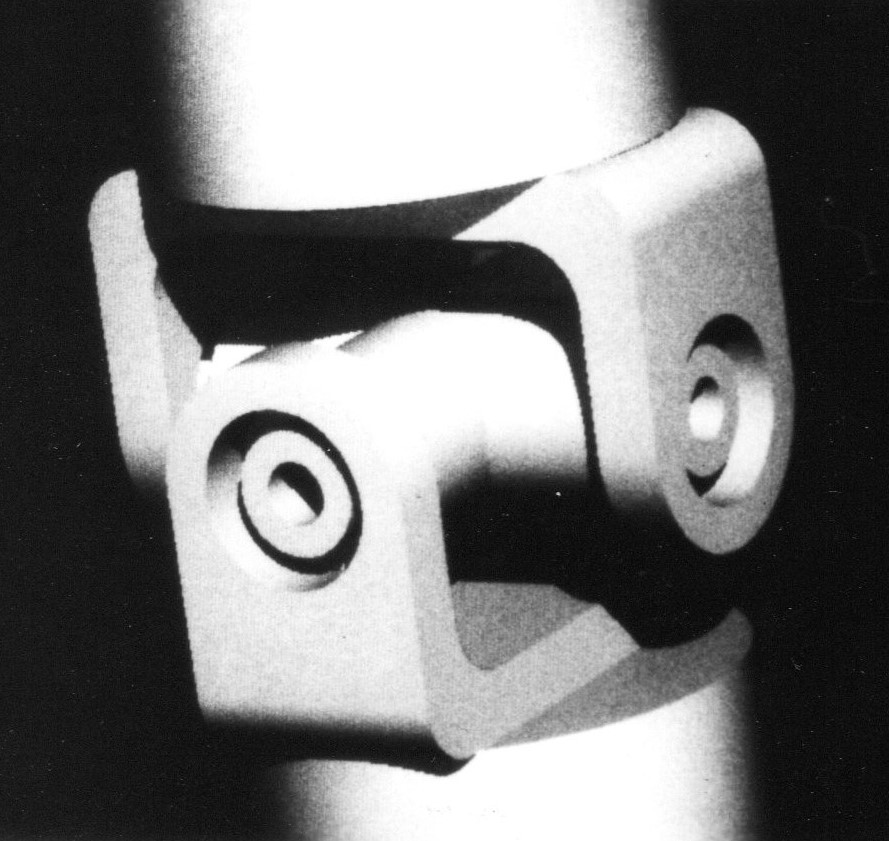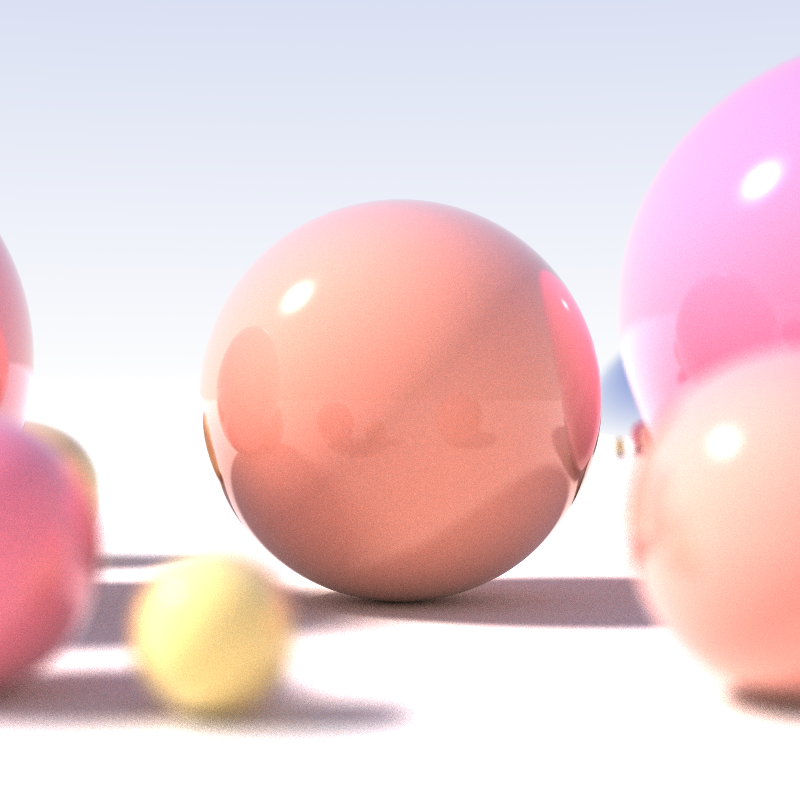|
Sparse Voxel Octree
A sparse voxel octree (SVO) is a 3D computer graphics rendering technique using a raycasting or sometimes a ray tracing approach into an octree data representation. The technique generally relies on generating and processing the hull of points (sparse voxels) which are visible, or may be visible, given the resolution and size of the screen. There are two main advantages to the technique. The first is that only pixels that will be displayed are computed, with the screen resolution limiting the level of detail required; this limits computational cost during rendering. The second is that interior voxels (those fully enclosed by other voxels) need not be included in the 3D data set; this limits the amount of 3D voxel data (and thus storage space) required for realistic, high-resolution digital models and/or environments. The basic advantage of octrees is that, as a hierarchical data structure, they need not be explored to their full depth. This means that a system can extract a sm ... [...More Info...] [...Related Items...] OR: [Wikipedia] [Google] [Baidu] |
Computer Graphics Rendering
Rendering is the process of generating a photorealistic or non-photorealistic image from input data such as 3D models. The word "rendering" (in one of its senses) originally meant the task performed by an artist when depicting a real or imaginary thing (the finished artwork is also called a " rendering"). Today, to "render" commonly means to generate an image or video from a precise description (often created by an artist) using a computer program. A software application or component that performs rendering is called a rendering engine, render engine, rendering system, graphics engine, or simply a renderer. A distinction is made between real-time rendering, in which images are generated and displayed immediately (ideally fast enough to give the impression of motion or animation), and offline rendering (sometimes called pre-rendering) in which images, or film or video frames, are generated for later viewing. Offline rendering can use a slower and higher-quality renderer. Int ... [...More Info...] [...Related Items...] OR: [Wikipedia] [Google] [Baidu] |
Raycasting
Ray casting is the methodological basis for 3D CAD/CAM solid modeling and image rendering. It is essentially the same as ray tracing for computer graphics where virtual light rays are "cast" or "traced" on their path from the focal point of a camera through each pixel in the camera sensor to determine what is visible along the ray in the 3D scene. The term "Ray Casting" was introduced by Scott Roth while at the General Motors Research Labs from 1978–1980. His paper, "Ray Casting for Modeling Solids", describes modeled solid objects by combining primitive solids, such as blocks and cylinders, using the set operators union (+), intersection (&), and difference (−). The general idea of using these binary operators for solid modeling is largely due to Voelcker and Requicha's geometric modelling group at the University of Rochester. See '' solid modeling'' for a broad overview of solid modeling methods. Before ray casting (and ray tracing), computer graphics algorithms projected s ... [...More Info...] [...Related Items...] OR: [Wikipedia] [Google] [Baidu] |
Ray Tracing (graphics)
In 3D computer graphics, ray tracing is a technique for modeling Light transport theory, light transport for use in a wide variety of Rendering (computer graphics), rendering algorithms for generating digital image, digital images. On a spectrum of Computation time, computational cost and visual fidelity, ray tracing-based rendering techniques, such as ray casting, #Recursive ray tracing algorithm, recursive ray tracing, Distributed ray tracing, distribution ray tracing, photon mapping and path tracing, are generally slower and higher fidelity than scanline rendering methods. Thus, ray tracing was first deployed in applications where taking a relatively long time to render could be tolerated, such as still computer-generated imagery, CGI images, and film and television visual effects (VFX), but was less suited to real-time computer graphics, real-time applications such as video games, where Frame rate, speed is critical in rendering each Film frame, frame. Since 2018, however, ... [...More Info...] [...Related Items...] OR: [Wikipedia] [Google] [Baidu] |
Octree
An octree is a tree data structure in which each internal node has exactly eight child node, children. Octrees are most often used to partition a three-dimensional space by recursive subdivision, recursively subdividing it into eight Octant (geometry), octants. Octrees are the three-dimensional analog of quadtrees. The word is derived from ''oct'' (Greek root meaning "eight") + ''tree''. Octrees are often used in 3D graphics and 3D game engines. For spatial representation Each node in an octree subdivides the space it represents into eight octant (solid geometry), octants. In a point region (PR) octree (analogous to a point quadtree), the node stores an explicit Point (geometry), three-dimensional point, which is the "center" of the subdivision for that node; the point defines one of the corners for each of the eight children. In a matrix-based (MX) octree (analogous to a region quadtree), the subdivision point is implicitly the center of the space the node represents. The root n ... [...More Info...] [...Related Items...] OR: [Wikipedia] [Google] [Baidu] |
Voxel
In computing, a voxel is a representation of a value on a three-dimensional regular grid, akin to the two-dimensional pixel. Voxels are frequently used in the Data visualization, visualization and analysis of medical imaging, medical and scientific data (e.g. geographic information systems (GIS)). Voxels also have technical and artistic applications in video games, largely originating with surface rendering in ''Outcast (video game), Outcast'' (1999). ''Minecraft'' (2011) makes use of an entirely voxelated world to allow for a fully destructable and constructable environment. Voxel art, of the sort used in ''Minecraft'' and elsewhere, is a style and format of 3D art analogous to pixel art. As with pixels in a 2D bitmap, voxels themselves do not typically have their position (i.e. coordinates) explicitly encoded with their values. Instead, Rendering (computer graphics), rendering systems infer the position of a voxel based upon its position relative to other voxels (i.e., its pos ... [...More Info...] [...Related Items...] OR: [Wikipedia] [Google] [Baidu] |
Level Of Detail (computer Graphics)
In computer graphics, level of detail (LOD) refers to the complexity of a 3D model representation. LOD can be decreased as the model moves away from the viewer or according to other metrics such as object importance, viewpoint-relative speed or position. LOD techniques increase the efficiency of rendering (computer graphics), rendering by decreasing the workload on graphics pipeline stages, usually vertex transformations. The reduced visual quality of the model is often unnoticed because of the small effect on object appearance when distant or moving fast. Although most of the time LOD is applied to Geometry (computer graphics), geometry detail only, the basic concept can be generalized. Recently, LOD techniques also included shader management to keep control of pixel complexity. A form of level of detail management has been applied to texture maps for years, under the name of mipmapping, also providing higher rendering quality. It is commonplace to say that "an object has been '' ... [...More Info...] [...Related Items...] OR: [Wikipedia] [Google] [Baidu] |
Data Structure
In computer science, a data structure is a data organization and storage format that is usually chosen for Efficiency, efficient Data access, access to data. More precisely, a data structure is a collection of data values, the relationships among them, and the Function (computer programming), functions or Operator (computer programming), operations that can be applied to the data, i.e., it is an algebraic structure about data. Usage Data structures serve as the basis for abstract data types (ADT). The ADT defines the logical form of the data type. The data structure implements the physical form of the data type. Different types of data structures are suited to different kinds of applications, and some are highly specialized to specific tasks. For example, Relational database, relational databases commonly use B-tree indexes for data retrieval, while compiler Implementation, implementations usually use hash tables to look up Identifier (computer languages), identifiers. Data s ... [...More Info...] [...Related Items...] OR: [Wikipedia] [Google] [Baidu] |
Anti-aliasing
Anti-aliasing may refer to any of a number of techniques to combat the problems of aliasing in a sampled signal such as a digital image or digital audio recording. Specific topics in anti-aliasing include: * Anti-aliasing filter, a filter used before a signal sampler to restrict the bandwidth of a signal such as in audio applications. * Manual anti-aliasing, an artistic technique done in pixel art graphics to smooth transitions between shapes, soften lines or blur edges. * Computer-generated imagery (CGI), the application of computer graphics for creating or improving images in art, printed media, simulators, videos and video games. * Spatial anti-aliasing, the technique of minimizing aliasing when representing a high-resolution image at a lower resolution ** Fast approximate anti-aliasing (FXAA), an anti-aliasing algorithm created by Timothy Lottes under Nvidia. May also be referred to as Fast Sample Anti-aliasing (FSAA). ** Multisample anti-aliasing (MSAA), a type of spatial ... [...More Info...] [...Related Items...] OR: [Wikipedia] [Google] [Baidu] |
Rasterisation
In computer graphics, rasterisation (British English) or rasterization (American English) is the task of taking an image described in a vector graphics format (shapes) and converting it into a raster image (a series of pixels, dots or lines, which, when displayed together, create the image which was represented via shapes). The rasterized image may then be displayed on a computer display, video display or printer, or stored in a bitmap file format. Rasterization may refer to the technique of drawing 3D models, or to the conversion of 2D rendering primitives, such as polygons and line segments, into a rasterized format. Etymology The term "rasterisation" comes . 2D images Line primitives Bresenham's line algorithm is an example of an algorithm used to rasterize lines. Circle primitives Algorithms such as the midpoint circle algorithm are used to render circles onto a pixelated canvas. 3D images Rasterization is one of the typical techniques of rendering 3D models ... [...More Info...] [...Related Items...] OR: [Wikipedia] [Google] [Baidu] |




